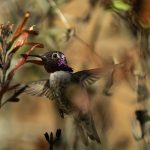The brown-crested flycatcher (Myiarchus tyrannulus) is a fascinating passerine bird from the tyrant flycatcher family, often spotted in Arizona. This bird stands out with its distinct calls and vibrant plumage.
Quick Facts
- Scientific Name: Myiarchus tyrannulus
- Conservation Status: Least Concern (IUCN 3.1)
- Distinct Call: Rough loud “come HERE, come HERE” or “whit-will-do, whit-will-do”
- Commonly Found In: Southern California, southern Nevada, central Arizona, and southern Texas
Subspecies Details
This species has several subspecies that vary in size and features across their range:
- M. t. tyrannulus: Smaller average size.
- M. t. magister: Largest of the subspecies.
Size
Brown-crested flycatchers are among the largest in the Myiarchus genus:
- Length: 18 to 24 cm (7.1 to 9.4 in), averaging around 20.3 cm (8.0 in)
- Weight: Typically between 30 and 45 g (11 to 1.6 oz), with extremes from 21 to 50 g (0.74 to 1.76 oz)
Appearance and Features
These birds boast heavy bills and olive-brown upperparts with darker heads adorned by short crests:
- Breast Color: Grey
- Belly Color: Lemon yellow
- Tail Feathers: Brown with rufous inner webs; remiges have rufous outer webs.
The sexes look similar making it challenging for casual observers to distinguish between males and females.
Where It Lives
In Arizona, these birds are typically found in open woodland areas:
- Common breeding grounds include central Arizona’s woodlands.
Habitat Preferences
Brown-crested flycatchers prefer open woodlands but can also be found in various other landscapes such as:
- Southern California woodlands
- Southern Nevada deserts They adapt well to both natural environments and human-altered habitats like parks.
Diet and Eating Habits
These birds primarily feed on insects caught while flycatching among undergrowth but will occasionally consume fruits like those from the gumbo-limbo tree (Bursera simaruba).
Migration Habits
While resident throughout much of their range, those breeding in the United States migrate southwards during winter months:
- Wintering locations include Mexico or southern Florida.
Conservation Status & Threats
Classified as Least Concern by IUCN, brown-crested flycatchers face minimal immediate threats but still depend on habitat conservation efforts for long-term survival.


